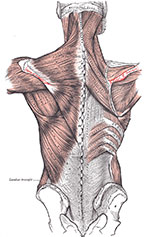 A study performed by researchers at Boulder Neurosurgical Associates and the University of Colorado at Boulder suggests that more optimistic patient expectation and mental health are significant factors that lead to improved clinical outcomes and higher patient satisfaction scores following cervical spine surgery. The results of this study, The Effects of Preoperative SF-36 Mental Component Summary Scores and Patient Pain Expectations on Clinical Outcomes Following Anterior Cervical Discectomy and Fusion, will be presented by Alan T. Villavicencio, MD, 2:40-2:49 pm, Tuesday, April 12, during the 79th Annual Scientific Meeting of the American Association of Neurological Surgeons in Denver. Co-authors are Frances A. Carr, BA, Theresa D. Hernández, PhD, Kyle M. Healy, BA, Ewell L. Nelson, MD, Alexander Mason, MD, Sharad Rajpal, MD, and Sigita Burneikiene, MD.
A study performed by researchers at Boulder Neurosurgical Associates and the University of Colorado at Boulder suggests that more optimistic patient expectation and mental health are significant factors that lead to improved clinical outcomes and higher patient satisfaction scores following cervical spine surgery. The results of this study, The Effects of Preoperative SF-36 Mental Component Summary Scores and Patient Pain Expectations on Clinical Outcomes Following Anterior Cervical Discectomy and Fusion, will be presented by Alan T. Villavicencio, MD, 2:40-2:49 pm, Tuesday, April 12, during the 79th Annual Scientific Meeting of the American Association of Neurological Surgeons in Denver. Co-authors are Frances A. Carr, BA, Theresa D. Hernández, PhD, Kyle M. Healy, BA, Ewell L. Nelson, MD, Alexander Mason, MD, Sharad Rajpal, MD, and Sigita Burneikiene, MD.
Age, injury, poor posture, or diseases such as arthritis can lead to degeneration of the bones or joints of the cervical spine, causing disc herniation or bone spurs to form. Herniated discs or bone spurs may narrow the canal through which the spinal cord runs or narrow the small openings through which spinal nerve roots exit. Pressure on a nerve root from a herniated disc or bone spur may cause pain in the arm and neck, numbness or weakness in the arm, or tingling in the fingers or hand. Cervical stenosis occurs when the spinal canal narrows and compresses the spinal cord and is most frequently caused by aging. Degenerative changes associated with cervical stenosis can affect the vertebrae by contributing to the growth of bone spurs that compress the nerve roots. If pain is persistent and resistant to conservative treatment, patients may be candidates for cervical discectomy and fusion.
Anterior cervical discectomy and fusion (ACDF) has been the mainstay treatment for many years. This surgery successfully relieves nerve root compression caused by a herniated disc or bone spurs. Through a small incision made near the front of the neck, the intervertebral disc is removed to access the compressed neural structures, thereby eliminating the source of compression. A bone graft or alternative structural implant is placed between the adjacent vertebrae, and in some cases, a small metal plate is utilized to stabilize the spine while it heals.
The authors performed a prospective study that enrolled 79 patients (38 males, 41 females) that underwent one to three-level ACDFs. Preoperatively, patients were asked to rate their expected neck and arm pain as result of surgery using a scale from 0 to 10. The patients were separated into two categories: those who expected complete resolution of pain (n = 44) and those who expected some pain (n = 35) postoperatively. They were also asked to complete neck disability, overall health, and patient satisfaction results surveys. Average follow-up was 38.8 months.
“While neck disability or physical health rating scores did not differ significantly between the two expectation groups, the patients who expected no pain reported lower postoperative neck and arm pain, higher postoperative mental health ratings and higher satisfaction scores. Additionally, we noted that higher preoperative mental health ratings significantly predicted lower postoperative neck pain and neck disability scores, and higher postoperative physical and mental health ratings, as well as patient satisfaction levels,” said Dr. Villavicencio.
“This study clearly demonstrates the effect of patient mental health and optimism on clinical outcomes and also suggests that meeting patient expectations in terms of pain relief is less important than their outlook and optimism. While we do not suggest artificially or unrealistically increasing patient expectations, it is important to take into consideration factors such as mental health and optimism of patients before they undergo surgical procedures. Surgical technique, clinical indications, and multiple other factors have a cumulative effect on clinical outcomes after ACDF. Recently, there has been a growing body of literature that emphasizes the importance of psychological factors. Our prospectively designed study clearly demonstrates the important role these factors play and may encourage physicians to have better communication with patients before surgery,” said Dr. Villavicencio.
Material adapted from American Association of Neurological Surgeons (AANS).
No comments yet.